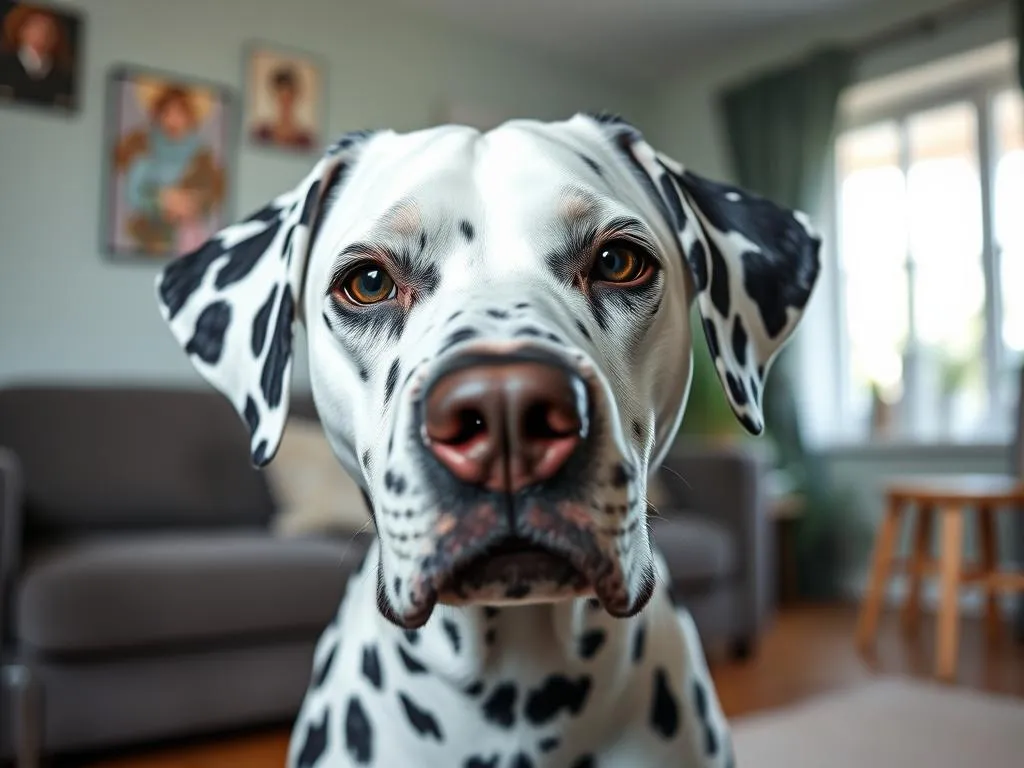
Dalmatians are one of the most recognizable dog breeds in the world, known for their striking black or liver-colored spots on a pure white coat. These dogs have been depicted in popular culture, notably in movies like “101 Dalmatians,” which has created an image of them as playful and energetic companions. However, if you’re considering adopting a Dalmatian, one critical question arises: is a Dalmatian a good apartment dog?
Choosing the right dog for apartment living is essential, as not all breeds adapt well to smaller spaces. This article will explore the various aspects of Dalmatians as apartment dogs, breaking down their characteristics, needs, and the lifestyle adjustments required to ensure a happy living environment.
Understanding the Dalmatian Breed
History and Origin
The Dalmatian breed has a rich history that dates back several centuries. Originally bred in the Dalmatia region of Croatia, these dogs were used as carriage dogs, guarding horse-drawn fire engines, and even serving as war dogs. Their unique appearance and spirited personality quickly made them a favorite among nobles and aristocrats. Understanding this background provides insight into their active nature and need for companionship.
Physical Characteristics
Dalmatians are medium-sized dogs, typically weighing between 45 to 70 pounds and standing about 19 to 24 inches tall at the shoulder. Their short, dense coat requires minimal grooming, making them relatively low-maintenance in terms of care. However, they do shed, which can be a consideration for those living in close quarters with neighbors. Regular brushing helps manage shedding and keeps their coat healthy.
Temperament and Personality
Dalmatians are known for their energetic and playful personalities. They are intelligent, alert, and often form strong bonds with their owners. This breed is generally friendly and sociable, but they can be stubborn, making training essential. Given their high energy levels and playful nature, they require a good amount of exercise and mental stimulation to prevent boredom and destructive behaviors.
Apartment Living Considerations
Space Requirements
When considering whether a Dalmatian is a good apartment dog, the space available becomes a significant factor. Dalmatians thrive in environments where they can move freely. While they can adjust to apartment living, it’s crucial to have enough room for them to stretch and play. A small studio may feel cramped for a Dalmatian, while a larger two-bedroom apartment might provide the necessary space for comfortable living.
Noise Levels
Dalmatians are known for their vocal nature, which can be a challenge in an apartment setting. They may bark at passersby or noise outside, potentially disturbing neighbors. If you live in a densely populated area, it’s essential to consider whether you can manage this aspect of their behavior. Early socialization and training can help mitigate excessive barking.
Exercise Needs
One of the most critical aspects of having a Dalmatian in an apartment is meeting their exercise needs. These dogs require at least 1-2 hours of vigorous exercise daily. In an apartment, you may need to be creative in finding ways to fulfill this requirement. Regular walks, interactive play sessions, and trips to dog parks can help keep your Dalmatian physically active and mentally stimulated.
Pros of Having a Dalmatian in an Apartment
Adaptability
Despite their size and energy, many Dalmatians can adapt to apartment living successfully. With proper training and a structured routine, they can thrive in smaller spaces. There are numerous examples of happy Dalmatians living in apartments, demonstrating that, with the right approach, they can adjust well to urban life.
Affectionate Companionship
Dalmatians are known for their affectionate nature. They form strong bonds with their owners and can be incredibly loyal companions. This loyalty can create a profound sense of companionship, which can be especially comforting in an apartment setting where social interaction may be limited. Their playful demeanor can also brighten your day after a long workday.
Low Shedding
While Dalmatians do shed, their short coat means less hair to deal with compared to long-haired breeds. For apartment dwellers, this can be a significant advantage regarding cleanliness and maintenance. Regular grooming can help manage shedding, making it easier to keep your living space tidy.
Cons of Having a Dalmatian in an Apartment
High Energy Levels
One of the primary considerations when asking if a Dalmatian is a good apartment dog is their high energy levels. In smaller living spaces, this energy can translate into restlessness and frustration if not adequately addressed. Dalmatians require regular exercise—without it, you may find yourself dealing with destructive behaviors, such as chewing furniture or excessive barking.
Behavioral Challenges
Dalmatians can exhibit some behavioral issues, particularly if they are not trained or socialized properly. Common challenges include separation anxiety, stubbornness, and a tendency to be overly excitable. These behavioral traits can be more pronounced in an apartment environment, where space and stimulation may be limited. Addressing these issues through consistent training and positive reinforcement is crucial.
Socialization Needs
Socialization is essential for Dalmatians, who thrive on interaction with other dogs and people. In an apartment setting, finding opportunities for socialization can pose a challenge. It’s vital to expose your Dalmatian to various environments, people, and other dogs to help them develop into well-rounded pets. This may require extra effort, such as arranging playdates or visiting dog parks regularly.
Tips for Living with a Dalmatian in an Apartment
Creating a Routine
Establishing a structured routine is crucial for successfully living with a Dalmatian in an apartment. Dogs thrive on routine, and having a set schedule for walks, playtime, and training can help manage their energy levels and behavioral issues. Aim for multiple short walks throughout the day, along with dedicated playtime and training sessions to keep your Dalmatian engaged and happy.
Training and Obedience
Training is vital for apartment living, as it helps manage your Dalmatian’s behavior and ensures they understand boundaries. Basic commands and leash training are essential to prevent pulling during walks and to ensure good manners in public spaces. Consider enrolling in a training class or seeking resources to aid in effective training. Positive reinforcement methods work well with Dalmatians, who respond better to encouragement than punishment.
Finding Local Resources
Living in an apartment doesn’t mean you have to sacrifice your Dalmatian’s exercise needs. Look for nearby parks, dog-friendly areas, or community spaces where your dog can run and play. Many cities also offer dog training classes and socialization groups, which can provide valuable opportunities for both you and your Dalmatian to meet other dogs and owners.
Conclusion
In summary, the question of whether a Dalmatian is a good apartment dog depends on various factors, including your lifestyle, commitment, and ability to meet their needs. Dalmatians can thrive in apartment settings with the right approach, including adequate exercise, training, and socialization. Their affectionate and loyal nature can make them wonderful companions, even in smaller living spaces. Ultimately, it’s essential to assess your living situation and ensure you can provide the necessary environment and care for a Dalmatian.
Before making the decision to adopt, consider your lifestyle and how a Dalmatian would fit into it. With the right preparation and dedication, you can enjoy the unique companionship that a Dalmatian offers, even in an apartment setting.









